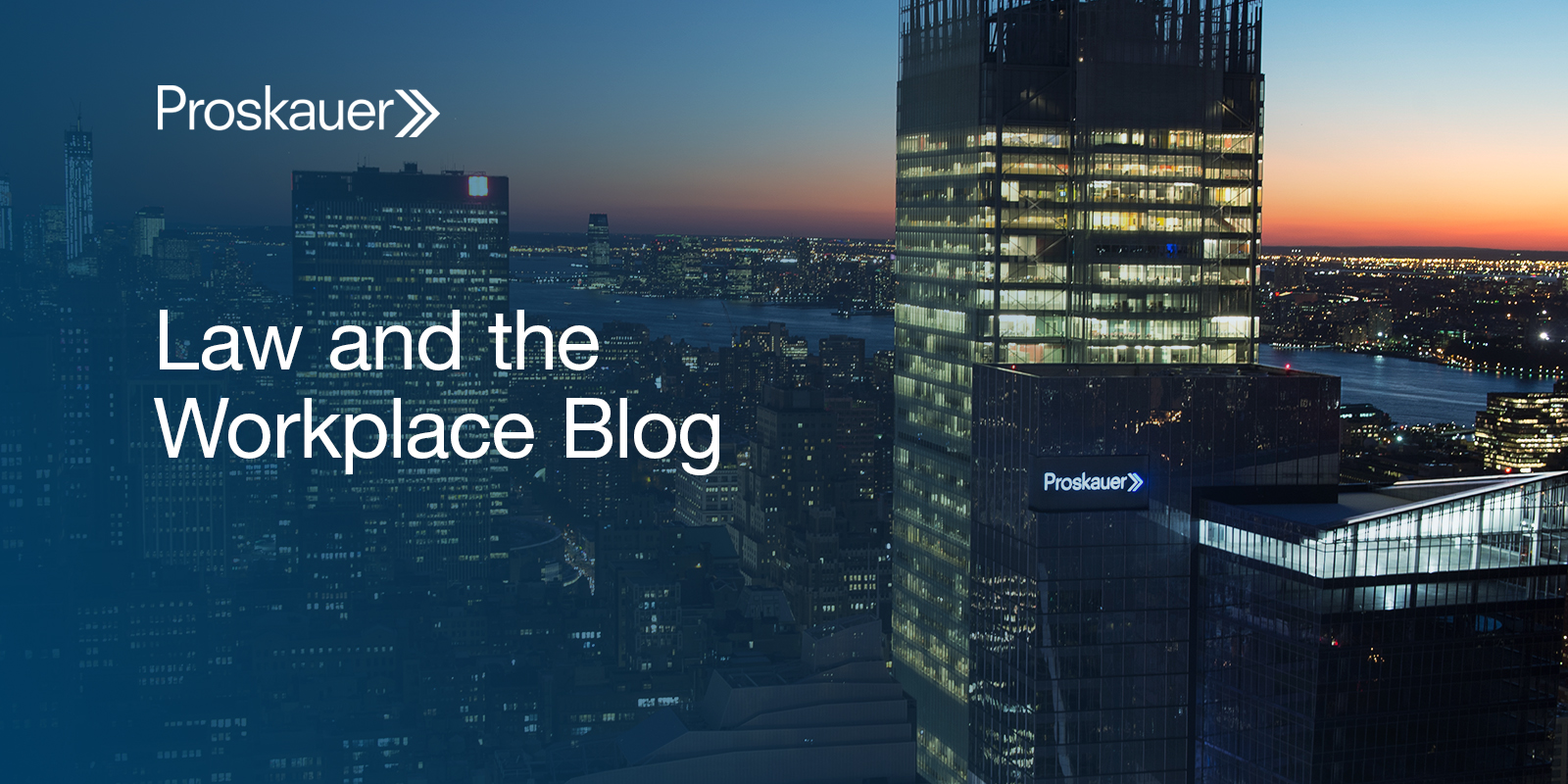Second Circuit Ruling Could “Impact” Discrimination Claims Brought by Remote Workers under NYS Human Rights Law
In King v. Aramark Services, Inc., No. 22-1237 (March 20, 2024), a Second Circuit panel affirmed the dismissal of claims under the New York State Human Rights Law (“NYSHRL”), concluding that under New York’s “impact test,” occasional remote work by an employee within the state is insufficient to render New York “the place where the impact of the alleged discriminatory conduct is felt” for purposes of coverage under the NYSHRL.
However, the court permitted plaintiff’s hostile work environment claim under Title VII of the Civil Rights Act of 1964 (“Title VII”) to proceed, holding that a discrete discriminatory act within the statute of limitations period may render a hostile work environment claim timely if part of the course of discriminatory conduct underlying the claim.
Background
Plaintiff Kristen King (“King”) was employed by Defendant Aramark Services (“Aramark”). King managed a contract to provide food and facility services in Virginia and West Virginia locations and was assigned to an Aramark office in Virginia. Aramark allowed King to work remotely from her primary residence in New York and her rented home in Virginia on days that she did not have to be at a specific company facility location.
Beginning in February 2015, King alleged that a new manager, Griffith Thomas (“Thomas”) publicly reprimanded her, body shamed her for her weight, and excluded her from important meetings. King also alleged that Thomas fabricated performance issues and schemed to terminate her without cause.
From March 2015 to March 2016, King received intermittent leave under the Family and Medical Leave Act (“FMLA”) to care for her ill son, and in December 2015 she went on short term disability status in connection with a surgery. During these leave periods, Aramark approved King’s working from her New York home office.
King alleged that Thomas questioned the validity of her need for leave and that, upon her return, she was required to immediately undertake significant travel. However, King asserted that Thomas did not question a male colleague’s need to work remotely or require significant travel of another male colleague immediately upon his return from medical leave.
In September 2017, King was notified that she was under investigation over an alleged reimbursement violation. The next day, King called Aramark’s employee hotline to complain about Thomas’s behavior. Three days later, Thomas terminated King.
King filed suit in the Western District of New York, alleging that Aramark subjected her to a sex-based hostile work environment, sex-based discrimination, and retaliation in violation of the NYSHRL and Title VII. The district court dismissed King’s claims under the NYSHRL finding that: (1) because King was not hired as a New York based employee, Aramark could not incur liability under NYSHRL, and (2) the NYSHRL does not authorize a cause of action where an out-of-state employer commits discriminatory acts outside of New York. Additionally, the district court granted summary judgement to Aramark on King’s Title VII claims, reasoning that most of King’s claims were time barred, and that no jury would render a verdict in favor of King on her remaining sex-based discrimination and retaliation claims.
The Second Circuit’s Ruling
Dismissal of Claims under the NYSHRL
The Second Circuit affirmed the district court’s dismissal of King’s claims under the NYSHRL but based on different reasoning, finding that under New York’s “impact test” (set forth by the New York Court of Appeals in Hoffman v. Parade Publications, 15 N.Y.3d 285 (2010)), any discriminatory impact felt by King in New York State was “incidental” and therefore could not give rise to liability under the NYSHRL.
Specifically, the Second Circuit noted that in determining where alleged discrimination took place for purposes of the NYSHRL, New York courts must look to “the place where the impact of the alleged discriminatory conduct is felt.” Here, King argued that because she received permission to work from her New York home for a significant amount of time, she felt the impact of Aramark’s alleged discrimination in New York. However, the Second Circuit disagreed and noted that Aramark hired King to work in Virginia and West Virginia, and her duties required her to be readily available to service the non-New York facilities in person at any time. The court further noted that King rented a home in Virginia, and for a period Aramark paid her travel reimbursement when traveling only from her Virginia home to the client facilities.
The Second Circuit also found that the fact that some of the alleged conduct took place while Aramark permitted King to work from her New York residence was of no consequence. The court noted that the New York remote work was extended in part as accommodations or occurred while she was on intermittent FMLA, and that the “lion’s share” of the alleged conduct was directed at her in Virginia. As such, the court concluded that King’s allegations were
“insufficient to support the inference that the impact of Aramark’s alleged discriminatory acts was felt in New York within the meaning of [the NYSHRL].”
Additionally, the Second Circuit rejected King’s argument that the NYSHRL authorizes claims of discrimination by New York residents against non-New York corporations for conduct taking place outside the bounds of New York. In accordance with prior state appellate rulings, the Court found that because Aramark is a Delaware corporation with its principal place of business in Pennsylvania, even assuming King was a New York resident, Aramark could not be held liable under the NYSHRL for discriminatory acts taking place in Virginia or West Virginia.
Reversal and Remand of Title VII Hostile Work Environment Claim
The Second Circuit held that the district court erred in granting Aramark summary judgment on King’s Title VII hostile work environment claim. Under Title VII, individual discrete acts of discrimination become actionable the day the act occurs and remain actionable up to, in New York, 300 days after the act takes place. However, when specific and related instances of discrimination are allowed to continue unremedied for so long as to amount to a hostile work environment, a continuing violation can be found. The Second Circuit found here that while a timely hostile environment claim cannot make an untimely discrete act actionable in itself, “[a] discrete discriminatory act, such as termination, within the limitations period may not only support a claim for damages, it may also render a hostile work environment claim timely if it is shown to be part of the course of discriminatory conduct that underlies the hostile work environment claim” (emphasis in original).
Here, the Second Circuit found that a jury could conclude that King was subject to an ongoing discriminatory pattern or practice because Thomas showed a long-running history of subjecting King to a pervasive, hostile work environment, culminating in her termination. While the majority of discriminatory acts alleged to have been aimed at King were individually time barred, King’s hotline call as well as her ultimate termination took place within the actionable timeframe. The court further reasoned that based on evidence of Thomas’s conduct surrounding King’s termination, a jury could find that Thomas “misdirected the HR investigation” and “Thomas’s interference was a continuation of his hostile treatment of King.” The court thus concluded that because Thomas’s interference was a continuing violation and took place within the allowed timeframe, King’s entire hostile work environment claim was actionable.
The Second Circuit further found that the district court erred in granting Aramark summary judgment on King’s disparate treatment and retaliation claims, finding that sufficient issues of fact existed on both claims.
Implications
In the current environment where remote work has in many cases become a part of normal operations, this decision highlights that some remote work from a New York location alone is unlikely to be enough to satisfy the “impact test” to trigger coverage under the NYSHRL. Additionally, this decision firmly establishes the Second Circuit’s position that “[t]he continuing violation doctrine allows a Title VII plaintiff to rely on a discrete act to render a hostile environment claim timely if the plaintiff establishes that the discrete act was part of the ongoing, discriminatory practice that created a hostile work environment.” However, the court went on to emphasize that “an unrelated discrete act, different in kind from the conduct giving rise to the hostile environment, does not trigger the continuing violation doctrine.”






